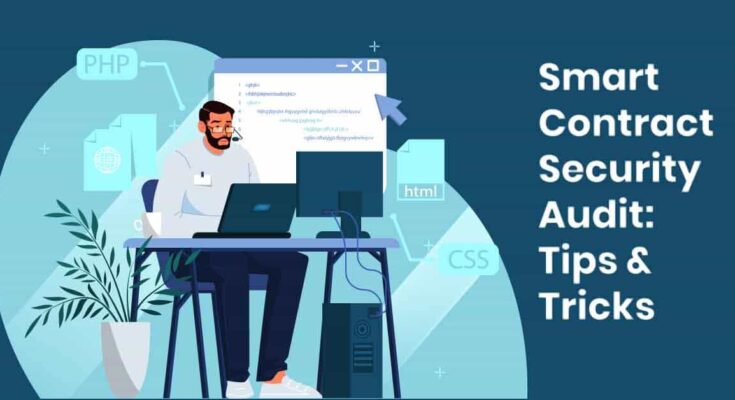Smart contracts are small, immutable codes that are visible to everyone, run on decentralized nodes, reside in a specific blockchain network, and help transfer user funds. However, even a small vulnerability in a smart contract can cause you a massive fund loss.
Therefore, there is a pressing need to consider the security aspect of a smart contract very seriously. This is where smart contract audit comes into play. When experienced auditors audit your contracts, they build a shield for your blockchain project that keeps hackers away.
Because of the immutable nature of the blockchain, it is impossible to change a code once it is deployed on the blockchain. Thus, completing this process before deploying the security code on the blockchain is important to eliminate the loss of funds later.
Follow The Smart Contract Audit Preparation Checklist
When you take smart contract audit services from a reputed company, they will help you free your contract from all its vulnerabilities and ensure to carry out the process systematically. Also, they will provide you with certain tips and tricks to make the process smoother.
The first tip is to stick to the auditor’s checklist for auditing a smart contract.
This is the checklist that most auditors follow for auditing every blockchain project.
Step 1: Functional requirements
Documentation is enough. Functional requirements help put forward the app’s functions in a simple, easy-to-understand language. It is important to know them so that the auditors know what position the users and key stakeholders hold to make changes to the system. If the functional requirements are good, it becomes easier to outline the functions and desirable features of the system.
Step 2: Technical documentation
It explains all the details related to the application’s software. The range of information ranges from internal documentation for teams to external documentation for end users.
Step 3: Set up the environment for development.
Your project must have a development environment. It can be based on your preference (Truffle, Foundry, Hardhat).
If you don’t have the environment, the auditors can help you set it up, as this affects the code quality metric.
Step 4: Access to clean and executable code.
The next step is for the developers of your projects to give access to the auditors to well-configured code via a repository like GitLab, GitHub, Bitbucket, etc. There are some conventional formatting rules that your codebase must follow.
These are
- The code should follow an official language style guide. There are many popular style guides for Solidity, Rust, Vyper, etc.
- The code can be compiled.
- Resolve all the TODO and FIX comments
If your code follows all these rules, it will be much easier for the auditors to carry out the smart contract audit process smoothly. Unfortunately, only a few people pay attention to these rules.
Step 5: Verified Scope of Audit
Indeed, all audits are not equal. Some clients submit their complete projects, while others provide a portion. If that’s the case, the best way is to be prepared with a verified audit scope to make the task easier for the auditors. They will get more information about the repository link, commit, and paths to those smart contracts that need to be audited and the branch name.
Tips To Get Ready For A Smart Contract Audit
Here are some tips if you’re wondering how to smoothen the process of auditing your smart contracts.
Be prepared with good documentation.
The first thing to remember is that you must have a clear, simple, and concise description of everything you’re trying to build and why you are making it. There should be all the details about the system and unique smart contracts supporting it.
You should also include a specification of the intended functionality of the system. For every contract, there should be properties that must be maintained.
Clean the code to make it easier to run.
Run a linter on your code, and try to fix all the errors. You can do it by addressing all the warnings that the compiler produces. If any codes are not needed, then remove them. Before deploying the code to the mainnet, eliminate all the TODO or Fix me indicators.
Code Freeze
To get started with the audit, it is important that you freeze the code, halt its development, and then finally, relay a specific git comment hash. The reason is that any changes you make after the audit starts won’t be included in the audit. So, it is always suggested that you take time and delay the audit to make changes rather than changing the code afterward.
These are some of the ways by which you can smoothen the audit process. Whenever you decide to take the smart contract audit services from a reputed company, carry out these processes to get it done successfully without any hassles.
These were some tips and tricks to make the work easier for the blockchain project owners and the auditors. If this excites you, then it is time you should get it done so that you do not lose your funds in a massive hacking exploit. So, what are you waiting for? Get tech experienced and erudite auditors to work now!




